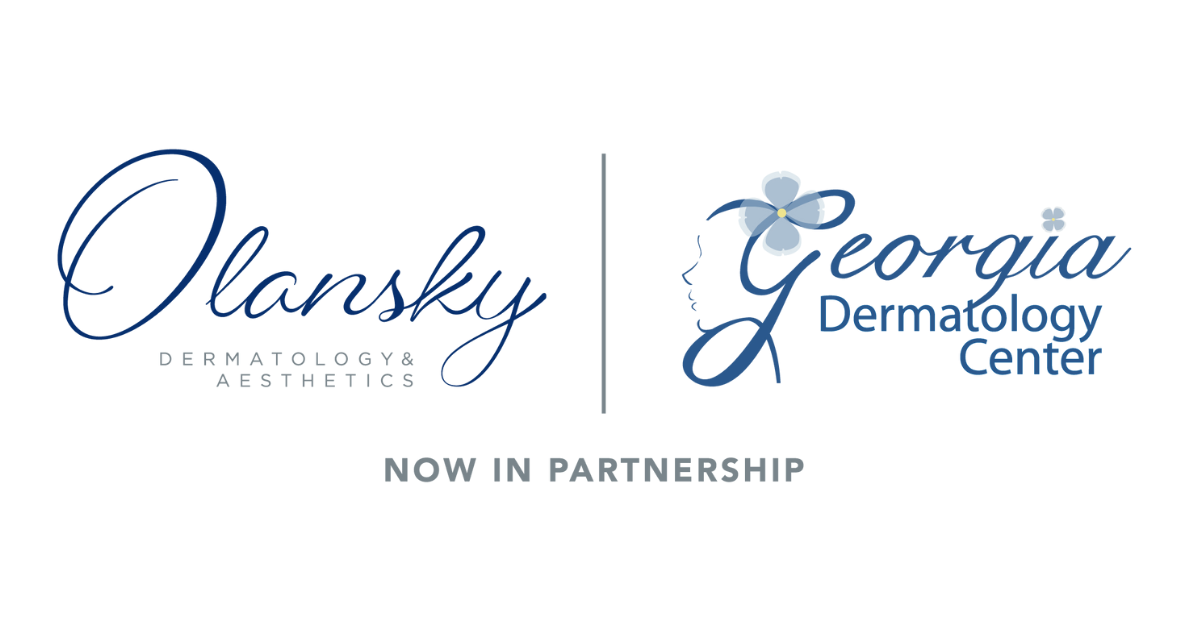Protect Your Skin From Aging and Cancer
 Is your skin giving a false impression of your age? Without protective measures, skin injury can make you look older than your actual years. Sun damage, in particular, paves the way to premature aging and skin cancer.
Is your skin giving a false impression of your age? Without protective measures, skin injury can make you look older than your actual years. Sun damage, in particular, paves the way to premature aging and skin cancer.
However, you have the power to sustain a youthful glow. Here are seven ways to preserve the health of your skin.
AGING EVIDENCE
Skin aging is partly caused by the breakdown of collagen, a protein that makes skin firm and pliant. Ultraviolet rays in sunlight speed collagen destruction. Signs of aging include:
- fine lines and wrinkles
- dark spots
- sagging skin
- blotching and thinning
- spider veins
- leathery texture
CANCER ALERTS
Ultraviolet light also causes three common skin cancers and growths with malignant potential.
- Basal Cell Carcinoma – Typically, this is a pearly or waxy lesion, sometimes exhibiting blood vessels within. If not removed, this carcinoma can deeply erode the skin.
- Squamous Cell Carcinoma – With a greater risk of spreading than basal cell, this lesion has three variations – either a crusty sore, firm red bump, or a growth that bleeds and doesn’t heal.
- Melanoma – The most deadly skin cancer, this growth has an irregular shape and border, enlarging rapidly. Although most melanomas are dark brown or black, they can also be multicolored, in shades of purple, pink, blue, red, beige, and white.
- Actinic keratosis is a crusty and scaly lesion, which can turn malignant.
Skin regions most prone to cancerous growths are those unprotected by clothing – your forehead, nose, ears, face, neck, scalp, hands, arms, shoulders, chest, and back. Squamous cell carcinoma also develops on the lips and legs.
Melanoma results from a combination of sun damage, genetics, ethnicity, and skin type. You’re most susceptible to melanoma if you have fair skin. Common sites in men are the back, trunk, neck, and head. In women, melanoma often occurs on the arms and legs. If you’re Asian, Hispanic, or African-American, you must especially guard against melanoma on your palms, soles, between your fingers and toes, and beneath your nails.
SKIN SAVERS
1. Sunscreen
The sun emits two types of ultraviolet light. UVA ages skin, while UVB confers sunburns. To avoid both kinds of sun injury, wear a broad-spectrum, water-resistant sunscreen, with SPF 35 or more. Every day, apply sunscreen 30 minutes before going outdoors.
Use at least two tablespoons of product, a gob the size of a golf ball or shot glass. Massage sunscreen into bare skin areas, repeating every two hours and immediately after swimming, toweling off, and perspiring.
Only use products that haven’t exceeded their expiration dates. At Georgia Dermatology Center, we carry three high-quality sunscreen brands – EltaMD, SkinMedica, and Revision.
**Often Forgotten**
When applying sunscreen, don’t neglect your ears, face, neck, hairline, hair part, and any thinning scalp areas. If you wear sandals, flip-flops, or go barefoot outdoors, remember to slather sunscreen on your feet.
If you have tattoos, target them, too! Tattoo inks heighten sun sensitivity, especially red and yellow colors, due to the cadmium sulfide they contain.
Be sure to cover scars with sunscreen. Otherwise, they can become dark, discolored, or cancerous. On your lips, smooth on balm or lipstick rated at least SPF 30.
WARNINGS
- Don’t make the mistake of skipping sunscreen on cloudy days. Even when skies are overcast, 80 percent of UV light can reach your skin. Plus, sunlight reflects off water, concrete, glass, sand, and snow.
- Did you know that in your car and home, ultraviolet rays can pass through window glass?
- Never use tanning beds and sunlamps, which also emit UV radiation.
- Certain medications increase sun sensitivity, making skin prone to dark spots and premature wrinkles. Be especially vigilant with skin protection if you take antibiotics, antifungals, chemotherapy, blood pressure drugs, or anti-seizure medications.
2. Protective Clothing
 Outside, wear sunglasses with UV protection, plus a hat with a 3-inch brim or wider. For the best body coverage, wear a long-sleeved shirt and full-length slacks. Choose clothing in dark colors and tightly woven fabrics, blocking more sun than loose fibers and white materials.Another option is clothing made with Ultraviolet Protection Factor (UPF). This rating indicates the fraction of ultraviolet rays (UVR) that can penetrate fabric. Buy apparel with at least UPF 30, allowing only 1/30th of UVR to reach your skin. This degree of shielding is vastly more than what a cotton T-shirt provides, with a UPF of roughly 5. One retailer of sun-safe clothing is Coolibar.
Outside, wear sunglasses with UV protection, plus a hat with a 3-inch brim or wider. For the best body coverage, wear a long-sleeved shirt and full-length slacks. Choose clothing in dark colors and tightly woven fabrics, blocking more sun than loose fibers and white materials.Another option is clothing made with Ultraviolet Protection Factor (UPF). This rating indicates the fraction of ultraviolet rays (UVR) that can penetrate fabric. Buy apparel with at least UPF 30, allowing only 1/30th of UVR to reach your skin. This degree of shielding is vastly more than what a cotton T-shirt provides, with a UPF of roughly 5. One retailer of sun-safe clothing is Coolibar.
3. Skin-Loving Nutrients
- Antioxidants – These plant compounds stave off aging and cancer by neutralizing free radicals, reactive molecules that damage cells. Among the causes of free radicals are pesticides, pollution, cigarette smoke, alcohol, fried foods, and UVR. Choice antioxidant sources are berries, citrus, pineapple, green tea, carrots, tomatoes, broccoli, pumpkin, peppers, nuts, and leafy greens.
- Phytoceramides – Our skin cells make these natural oils, storing them within their membranes. Ceramides hold cells together, forging a protective layer against moisture loss and toxin entry. With age, ceramide production wanes, yielding a weak barrier, making skin dry and easily irritated. However, you can boost levels by eating plant sources of ceramides, such as beets, spinach, brown rice, sweet potatoes, soybeans, and wheat germ.
- Omega-3 Fatty Acids – These healthy fats fortify cell walls, conserving moisture. Top sources are walnuts, chia seeds, flaxseeds, and avocado.
- Probiotics – Cultured foods supply probiotics, favorable microbes that live in our digestive tract. Among their many beneficial roles, probiotics curb the growth of inflammatory bacteria that degrade skin health. Probiotics also help to avert cancer by supporting immune cells. To bolster colonies of good bacteria, consume kefir, kombucha tea, tempeh, miso, and yogurt labeled with “live active cultures.”
NOTE – While increasing your intake of skin-loving foods, limit sugary and highly processed fare. Refined carbs raise blood sugar and insulin, inflaming skin cells and speeding the aging process.
4. Hydration
 Aging skin is also caused by not drinking enough water. When we’re dehydrated, our resourceful body shunts water to vital organs, rather than skin. Since collagen is largely water, a shortage deflates skin, promoting sagging, fine lines, and wrinkles. Other signs of thirsty skin are dryness, flaking, tightness, and itching.
Aging skin is also caused by not drinking enough water. When we’re dehydrated, our resourceful body shunts water to vital organs, rather than skin. Since collagen is largely water, a shortage deflates skin, promoting sagging, fine lines, and wrinkles. Other signs of thirsty skin are dryness, flaking, tightness, and itching.
For supple skin, drink water throughout the day. To gauge how much you need, divide your weight in half, and convert the pounds to ounces. The result is the volume of water your cells need daily. For instance, a person weighing 150 pounds requires 75 ounces of water each day. Meet your quota with frequent sips from a 16-ounce water bottle, refilling it as needed.
5. Restorative Sleep
Skimping on shut-eye makes skin age prematurely. While you’re in dreamland, your skin is busy repairing itself. Give your cells the time they need by logging at least seven hours of nightly sleep.
6. Alphabet Checklist
Once monthly, examine your skin, eyes peeled for cancer. Using handheld and full-length mirrors, do a head-to-toe assessment. Ask a family member to check obscure areas, such as your scalp, back of your knees, and soles of your feet.
Red flags are a new growth, bleeding mole, or non-healing sore. Use the alphabet rule as your guide, known as the “ABCDE’s of skin cancer.” Here’s what the letters signify:
A = asymmetry, with mismatching halves
B = irregular borders
C = change in color
D = diameter larger than a pencil eraser
E = evolution, showing new characteristics, such as enlarging, bleeding, itching, soreness, scaling, oozing, redness, or swelling.
To monitor changes in suspicious growths, take photos and date them. If any lesions have ABCDE characteristics, promptly make an appointment with Georgia Dermatology Center.
7. Professional Exams
Obtain skin cancer screenings at least twice annually. If you or family members have a skin cancer history, follow the doctor’s recommendation for exam frequency. Early cancer diagnosis and treatment lower the risk of disfigurement and spread.
METICULOUS VISITS

Dr. Alexander Gross
You can entrust your skin to Alexander Gross, M.D., with 25+ years in the practice of dermatological medicine. For further help reversing the signs of aging, the doctor also performs minimally invasive cosmetic enhancements and cosmetic surgery of the face, neck, and eyelids.
Such treatments can erase discoloration, mend sun damage, brighten skin, banish wrinkles, tone the jaw, trim unwanted fat, and lift sagging skin. Here’s an overview of the cosmetic services Dr. Gross offers.
Serving the Atlanta area, Georgia Dermatology Center and Medical Spa is based in Cumming, convenient to residents of Roswell, Milton, Suwanee, Gainesville, Alpharetta, Sandy Springs, and surrounding towns.
SKIN SMART
Safeguard your skin against cancer and aging with sunscreen, protective gear, staying hydrated, antioxidants, phytoceramides, omega-3 fats, probiotics, and at least seven hours of nightly sleep. Using the alphabet checklist, examine your skin monthly, showing any suspicious lesions to Dr. Gross. Otherwise, see the doctor twice yearly or at the frequency he advises.
With vigilant protection, you can maintain radiant skin!
Note – The material presented here is solely for educational purposes and cannot replace professional medical advice. For all dermatological concerns, contact Alexander Gross, M.D.
© 2018 Georgia Dermatology Center. All rights reserved.












